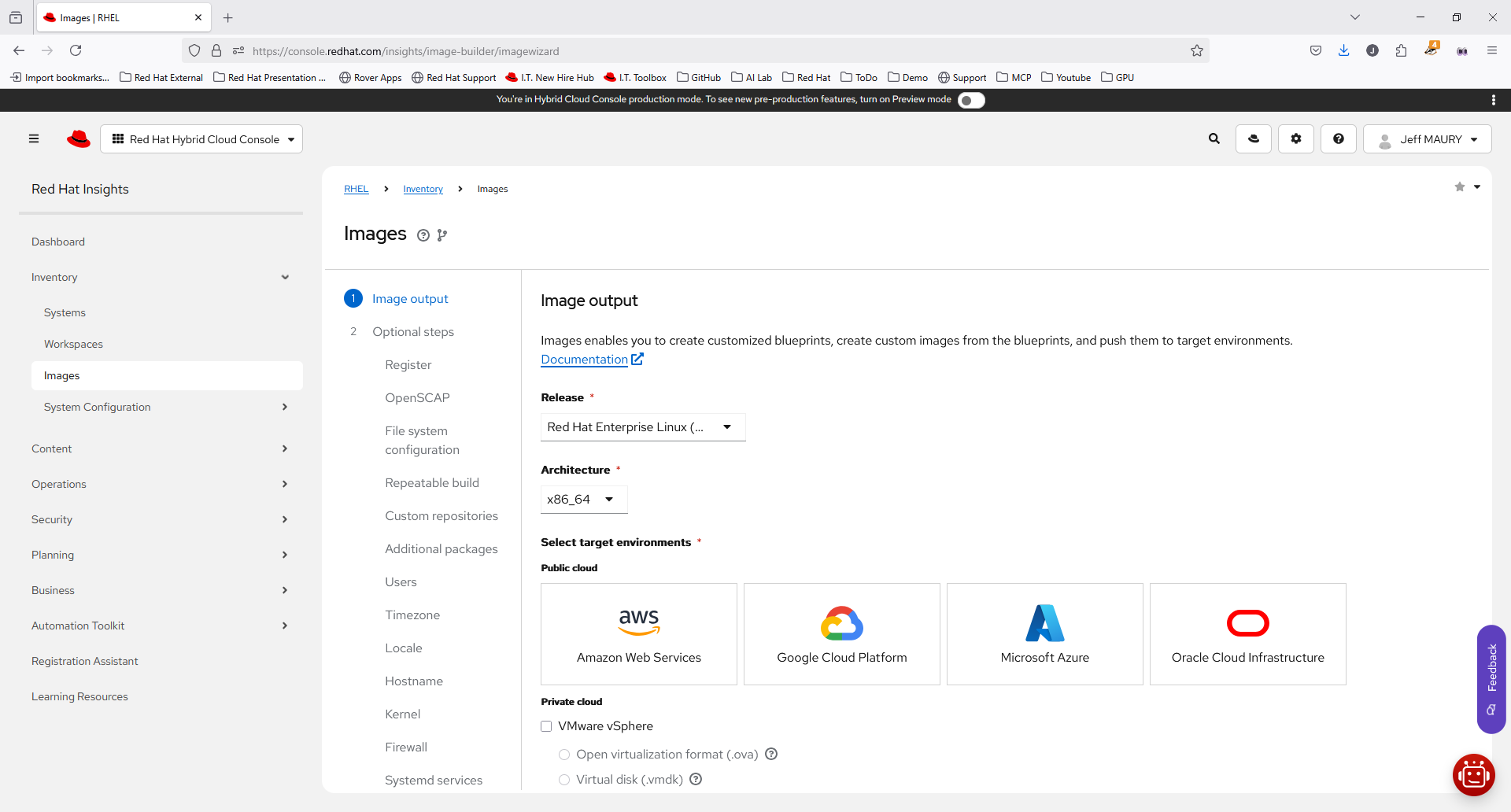The article Getting started with RHEL on WSL covers how to build and run Red Hat Enterprise Linux (RHEL) Windows Subsystem for Linux (WSL) images. Here, we'll dive into the specific options required to configure that RHEL 10 WSL distribution for use as a Podman machine.
Requirements
To use the RHEL 10 WSL image as a Podman machine, ensure that the following packages are installed:
podmanpodman-dockerprocps-ngopenssh-servernet-toolsiproutesudoiptables-nft
Luckily, all are available from the preconfigured RHEL 10 repositories.
Build the image
- Navigate to image builder (Figure 1).

- Click Create blueprint to open the Create image dialog wizard (Figure 2).

- On the Image output page, select the following:
- From the Release list, select Red Hat Enterprise Linux (RHEL) 10.
- From the Select target environments option, select WSL - Windows Subsystem for Linux (
.tar.gz). - Click Next.
- On the Register page:
- Select Automatically register and enable advanced capabilities.
- From the drop-down menu, choose an activation key to use for the image. See Creating an activation key.
- Click Next.
- On the OpenSCAP page, as it is not supported for WSL images, click Next.
- On the File system configuration page, select Recommended: Use automatic partitioning and click Next.
- On the Repeatable build page, select Disable repeatable build and click Next.
- On the Custom repositories page, click Next.
- On the Additional packages page:
- In the Available packages search field, enter
podman. - Select the
podmanandpodman-dockerpackages. - In the Available packages search field, enter
procps-ng. - Select the
procps-ngpackage. - In the Available packages search field, enter
openssh-server. - Select the
openssh-serverpackage. - In the Available packages search field, enter
net-tools. - Select the
net-toolspackage. - In the Available packages search field, enter
iproute. - Select the
iproutepackage. - In the Available packages search field, enter
sudo. - Select the
sudopackage. - In the Available packages search field, enter
iptables-nft. - Select the
iptables-nftpackage. - Click Next.
- In the Available packages search field, enter
- On the Users page, click Next.
- On the Timezone page, click Next.
- On the Locale page, click Next.
- On the Hostname page, click Next.
- On the Kernel page, click Next.
- On the Firewall page, click Next.
- On the First boot script configuration page, click Next.
- On the Details page:
- In the Blueprint name, enter
rhel10-wsl. - Click Next.
- In the Blueprint name, enter
- On the Review page, click Create blueprint and build image (Figure 3).

The image is being built. Once the build is finished, the download link will be available. Click the Download (.tar.gz) link and save the downloaded file to one of your local folders.
Create the RHEL 10 WSL Podman machine
Launch Podman Desktop and go to the Settings → Resources page, as shown in Figure 4.

On the Podman provider, click Create new ...
On the Create Podman machine page, click the Browse button for the Image Path field and select the file downloaded from image builder. See Figure 5.

Click the Create button. The machine will be created and started. After a short time, the operation status should be reported, as depicted in Figure 6.

Let's play with the RHEL 10 WSL Podman machine
Go to the Images page and pull the httpd image (Figure 7).

Click Done (Figure 8).

Start the image by clicking on the Run image icon (Figure 9).

Once the container is started, you can access the Apache server on http://localhost:9000.
Try Insights image builder and RHEL 10 on WSL today
Visit Insights image builder to build your customized image of RHEL 10, then deploy your image locally on Microsoft WSL. Check out the overview and the latest blog posts at redhat.com/image-builder.
You can also explore related learning paths:
